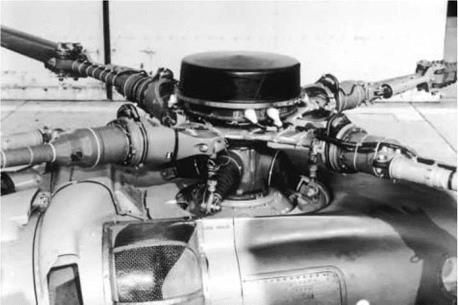Ground effect on inflow and induced power
Operating helicopters close to the ground introduces a range of special characteristics in the flight dynamic behaviour. The most significant is the effect on the induced velocity
![]()

|
|
|
|
at the rotor and hence the rotor thrust and power required. A succinct analysis of the principal effects from momentum considerations was reported in Ref. 3.43, where, in addition, comparison with test data provided useful validation for a relatively simple theory. Close to the ground, the rotor downwash field is strongly influenced by the surface as shown in Fig. 3.27. In Ref. 3.43, Cheeseman and Bennett modelled the ground plane influence with a rotor of equal and opposite strength, in momentum terms, at an equidistance below the ground (Fig. 3.27). This mirror image was achieved with a simple fluid source that, according to potential flow theory, served to reduce the inflow Vi at the rotor disc in hover by an amount given by
![]() AdVi
AdVi
16n zg
where Zg is the distance of the ground below the rotor disc and Ad is the rotor disc area. The rotor thrust, at constant power, can be written as the ratio of the induced velocity out-of-ground effect (oge) to the induced velocity in-ground effect (ige). Reference 3.43 goes on to derive an approximation for the equivalent thrust change in forward flight with velocity V, the approximation reducing to the correct expression in hover, given by eqn 3.218.
![]()

![]() (3.218)
(3.218)
|
Fig. 3.28 Influence of ground effect on rotor thrust (Ref. 3.43) |
|
Fig. 3.29 Influence of ground effect on power (Ref. 3.43) |
speeds of 2. Simple momentum considerations are unable to predict any influence of blade loading on ground effect. By combining momentum theory with blade element theory, it can be shown that (Ref. 3.43) increasing blade loading typically reduces ground effect such that a 10% increase in blade loading reduces the ige thrust increment by about 10%. Another interesting result from these predictions is that the increase in power required as a helicopter transitions oge is greater than the decrease in power due to the reduction in induced velocity. Figure 3.29, from Ref. 3.43, illustrates the point, showing the variation in power required as a function of forward speed, and reflects practical observations that a power increase is required as a helicopter flies off the ground cushion (Ref. 3.44). Further discussion of ground effect, particularly the effects on non-uniform inflow and hub moments, can be found in Ref. 3.45.

















